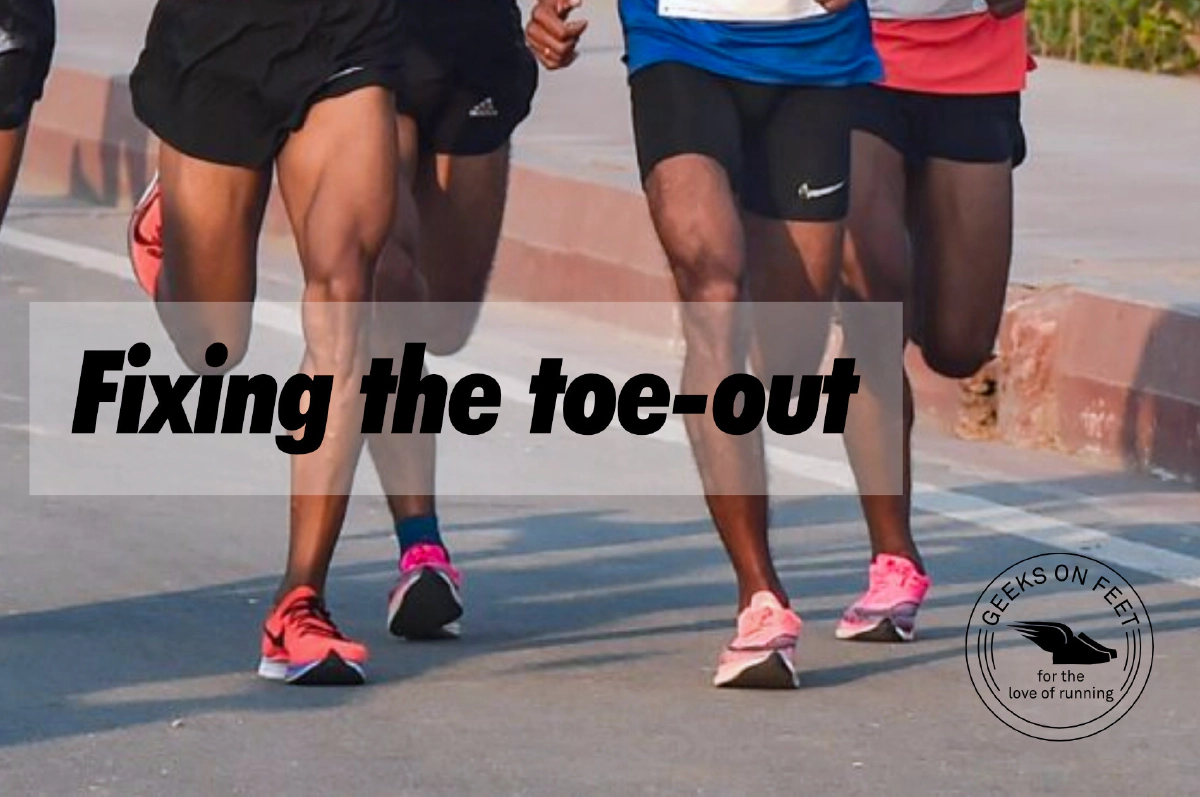
At RunMechanics, we have analyzed the biomechanics of 100+ runners, and most of them experience “Toe-out” (external rotation of feet). Minor toe-out is very common and harmless. However, when it crosses a threshold, it can start affecting your running in many ways.
Toe-out or any other biomechanical deviation during a run is a compensation we do that arises from some other part of our body. As runners, we all have a unique gait with some degree of misalignment, and we can try to get as close to the ideal biomechanics as possible by working on those misalignments and minimizing compensations.
Toe out is also popularly referred to as “Duck feet”, where the foot rotates out laterally upon landing. In other words, the foot is externally rotated during the stance phase of your running. Rotation angle of less than 10 degrees is quite common, and it is mostly harmless. However, if it is in excess, it is essential to understand the cause behind it.
Here is a picture that shows the contrast between a foot with toe-out (an angle of more than 10 degrees), and another without toe-out.
One of the common causes why our foot toes-out is that our hip abductor muscles (outer glutes & thighs) are tight and hip adductor muscles (inner thighs) are weak. Abductor muscles dominate and rotate the foot externally outwards.
Another common cause is the weak control of the foot arch, which is also the most common reason for Overpronation.
There are other causes too -
If the toe-out angle is less than 10 degrees, one can ignore it. Otherwise, the answer actually depends on the reason for the toe-out. An assessment by a sports physio or running gait analyst will help understand the possible cause behind the toe-out.
Foam rolling of Piriformis, Glutes, and Hip Abductors (outer thighs) will help if the toe-out is caused by hip abductor tightness. Take each area separately and roll for a minute.
Building strength in hip adductors will fix the imbalnce which might be the cause of the external rotation of the hip, which results in toed-out foot. Use of resistance band with foot adduction will help build the necessary strength the minimize the imbalance.
As mentioned, overpronation is another common cause, and using bands to strengthening posterior and anterior tibialis muscles will help.
Copenhagen plank is a staple for building groin (hip adductor) muscle strength.
Courtesy: Team Run Mechanics. This article was first published on runmechanics.in
If you are a running enthusiast, follow us on our social media channels @geeksonfeet on Twitter, and GeeksOnFeet on Instagram and Facebook for updates. Also let us know what running topics you would like to read on.